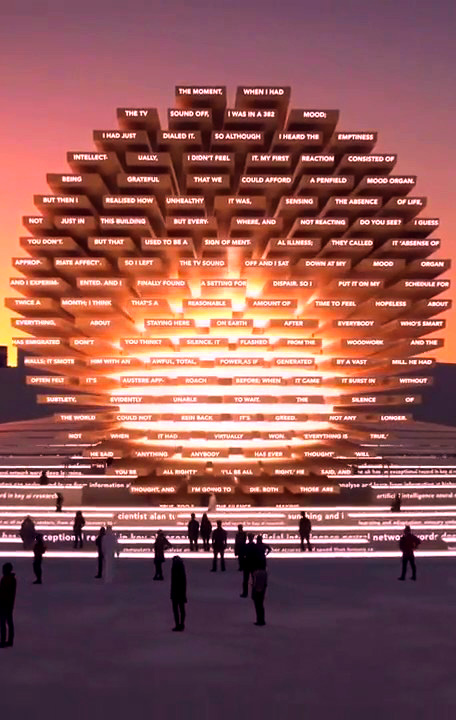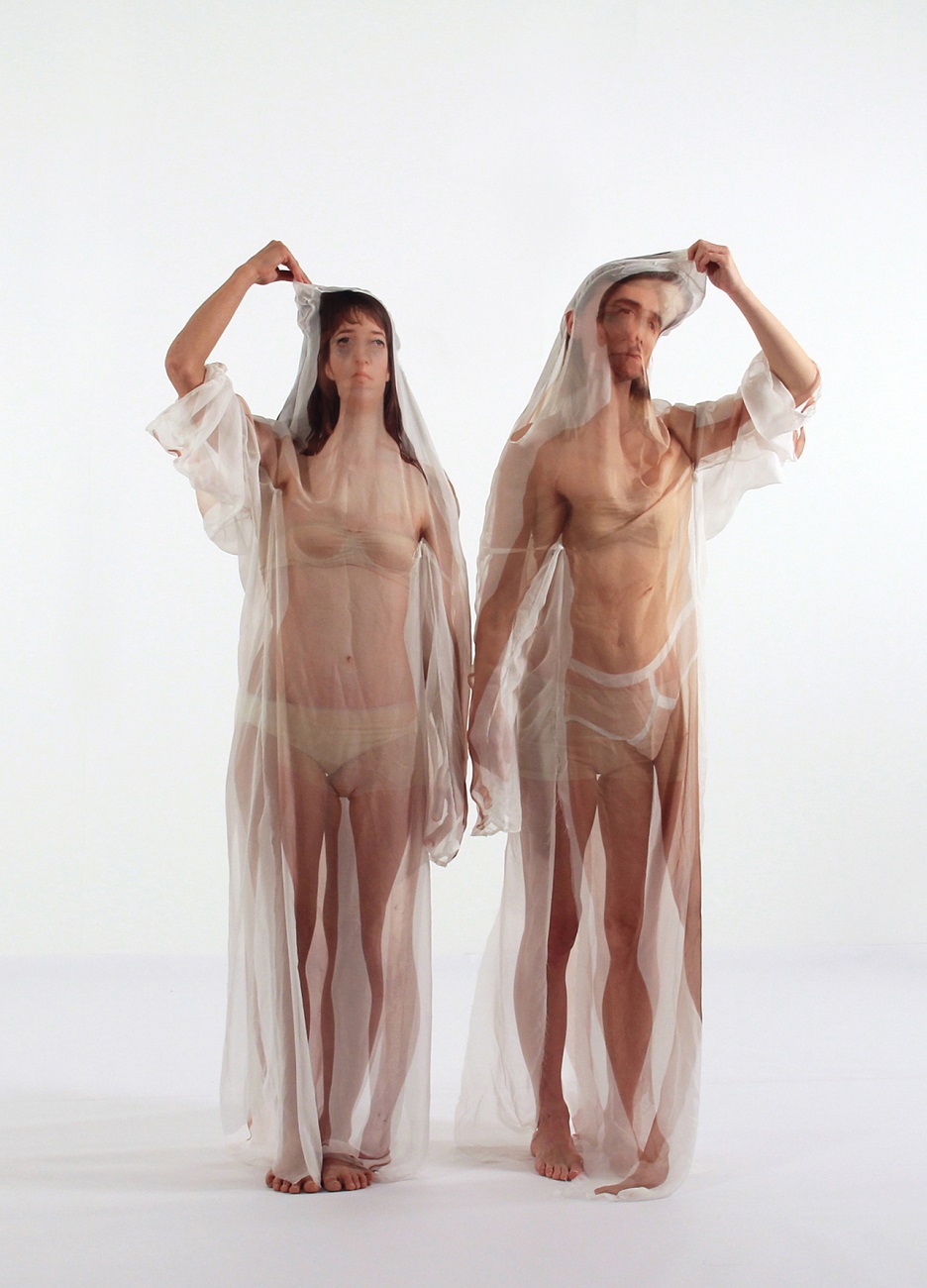
Filippo Nassetti and Vincenzo Reale
Thalassic Masks
The Thalassic Masks project focuses on rethinking the protective mask, transforming a medical product, born in a state of emergency, into a design statement expressing contemporary identities.

Thalassic Masks
The Thalassic Masks project focuses on rethinking the protective mask, transforming a medical product, born in a state of emergency, into a design statement expressing contemporary identities.

Skia
file festival
As natural as the daily sunshine, one’s shadow, formerly a constant companion, now often escapes from attention. A silhouette of our physical form, one’s shadow is no more than a flat, disembodied reduction of the contours of one’s self.The installation skia examines the interplay of our shadows and our conscious awareness of our physical displacement of space. In this closed-circuit installation, visitor´s images are manipulated and projected as artificial shadows.What does it mean if one’s shadow suddenly frees itself and develops an alien autonomy? And what has such an estrangement in common with the multiple identities of the post modern ego?

Difference and Repetition
The title references Deleuze’s thesis ‘Difference and Repetition’ – his attempt to understand reality without referring to identities. The artists aim to ‘unidentify’ the audience – to criticize the bubbles of reality which technology has helped us to build around ourselves. By allowing ourselves to remove our identity occasionally, we can better understand the thoughts of those we disagree with and therefore better work together to build a combined reality. Difference (in both senses) is generated by the motion control system which continuously changes the pose of the mirrors relative to the viewer. This movement disrupts space itself, creating a transformation similar to that of a Lorentz transformation when one travels close to the speed of light. This causes space itself to compress, twist and break, giving the viewer a tool for observing the non-absolute nature of time.

UK Pavillion
THE POEM PAVILION FEATURES A BREATHTAKING ILLUMINATED ‘MESSAGE TO SPACE’ TO WHICH EACH OF THE EXPO’S ANTICIPATED 25 MILLION VISITORS WILL BE INVITED TO CONTRIBUTE. “THE IDEA DRAWS DIRECTLY ON ONE OF STEPHEN HAWKING’S FINAL PROJECTS, ‘BREAKTHROUGH MESSAGE’, A GLOBAL COMPETITION THAT HAWKING AND HIS COLLEAGUES CONCEIVED IN 2015 INVITING PEOPLE WORLDWIDE TO CONSIDER WHAT MESSAGE WE WOULD COMMUNICATE TO EXPRESS OURSELVES AS A PLANET, SHOULD WE ONE DAY ENCOUNTER OTHER ADVANCED CIVILIZATIONS IN SPACE. WHAT IF THE UK PAVILION AT EXPO 2020 BECOMES A PLACE WHERE VISITORS FROM ALL OVER THE WORLD TAKE PART IN A COLLECTIVE GLOBAL PROJECT THAT SHOWCASES BRITISH EXPERTISE IN A.I. TECHNOLOGIES AND POETRY WHILE TRANSCENDING NATIONAL IDENTITIES?” Es Devlin

Eyes
Eyes is an interactive art installation and a series of biometric data artworks with my previous artwork Digiti Sonus. It’s an interactive biometric data art that transforms human’s Iris data into musical sound and 3D animated image. The idea is to allow the audience to explore their own identities through unique visual and sound generated by their iris patterns based on iris recognition and image processing techniques. As a part of the installation, selected distinctive iris images are printed in 3D sculptures, and it replays the sound generated from the iris data and projects 3D converted image images. The audience members can compare their iris-based sonic results with others, and question the “problem of disembodied identities’ in the digital era through the existence of audiovisual representations of individuals.

Memopol
Memopol-3 is an installation that visualizes visitor’s information field. It’s an Orwellian dystopia which is built on the technology of today. The tools of surveillance economy are abused to create a personal physical surveillance experience. Physical and virtual identities are quantified and processed into a stream of data. After the phases of data collection the visitor experiences a transcendent reflection of oneself that combines the past and the future, physical and immaterial into an audio-visual ceremony.

Deep Screen
Muti Randolph lives in Rio de Janeiro and studied Visual Communications and Industrial Design at the Pontificia Universisade Católica do Rio de Janeiro. One of the pioneers in computer art, animation and 3d illustration in Brazil, he has been shifting from virtual 3d to real 3d spaces creating visual identities, graphics, illustrations, sets, and interior architecture projects for clients mainly in the entertainment, fashion and technology areas.

史上第一位進入太空的藝術家
Bionic Angel
The work series “bionic angel” takes as its starting point the future transformation and technological control of human evolution. Rapid development in the field of so-called “g-r-i-n techno-logies” (genetics, robotics, information and nano-techno- logies) are changing our bodies, minds, memories, and identities, but also impact on our progeny. These technologies all converge with the aim of enhancing human performance. Prenatal genetic determination enables children to be built to plan.

ماریکو موری
森万里子
МОРИ, МАРИКО
The ring
Born in Tokyo in 1967, Mariko Mori first made an impact on the international art scene in the early-mid 1990s. Her perfectly-formed and powerfully ambitious sculptural and photographic work of that period was an immediately accessible reflection on the ways our identities were being shaped by various technologies and the philosophies driving them.

Имме Ван Дер Хаак
Beyond the Body
“My work focuses on altering the human form by affecting its figure with just one simple intervention. Photos of the human body are printed onto translucent silk which will create the possibility of physically layering different bodies, ages, generations and identities. In a dance performance, the moving body manipulates the fabric so the body and the silk become one, distorting our perception or revealing a completely new physical form. The movement then brings this to life.”

Multiple Identities, Sustainable Development
The focus is on multiple identities. There are pale, milky plastic pipes attached to the ceiling of the concrete interior, inside which, moved by fans, roll white balls. One after the other. If the one arrives, a new one is sent to another tube.Such works breathe inner unity. This closeness is sometimes a closeness, if not encryption. Because the language of contemporary installation art is foreign and difficult to read. The viewer’s gaze likes to evaluate subjectively and is always shaped by environmental influences such as culture, trends, styles, beliefs, experiences and politics. This makes the interpretation uncertain, it becomes subjective, often tempting to misconduct. Because anyone who claims that the work of art is created in the eye of the beholder and means that everyone, regardless of where they come from and how educated, can make a valid statement about a work of art is wrong. What Marcel DuChamp meant is that it unfolds in the eye of the beholder. But this development should not mean that simply opening the eyes also brings with it knowledge and insight. These qualities are developed through active participation, through perception. This, in turn, is not only feasible through the visual stimulus in the eye. It is possible, however, if you know who the artist is, what he is doing, what he wishes to express and with which underlying design principles the view is guided in what way to what. Only then does the processing take place, a connection of the causal relationships, which ultimately leads to art in the eye of the beholder. To an inner feeling outside of the spontaneous feelings.